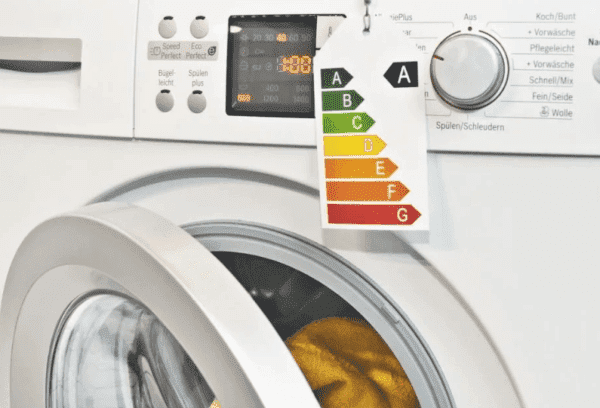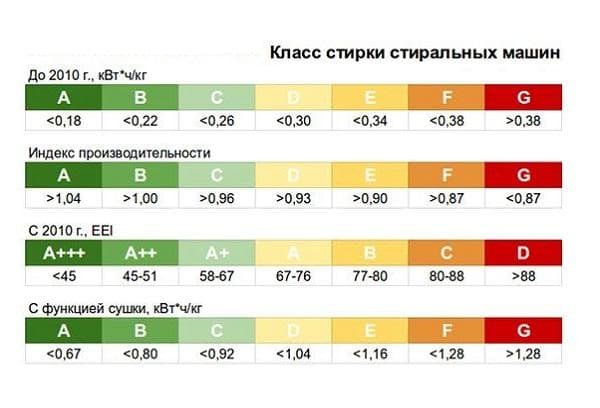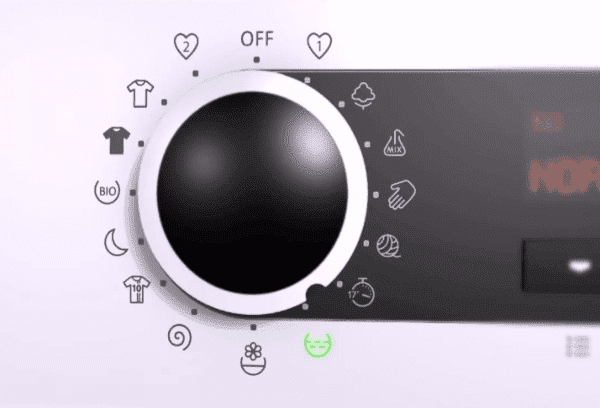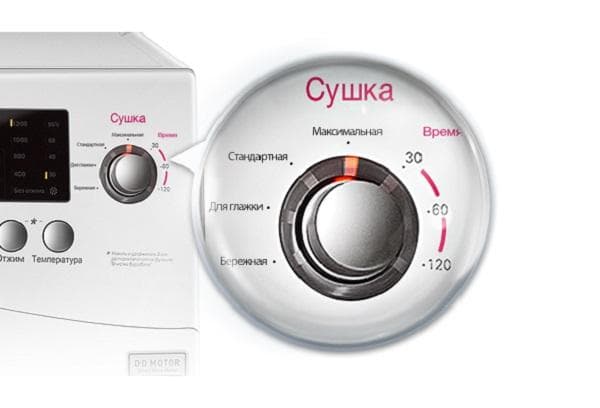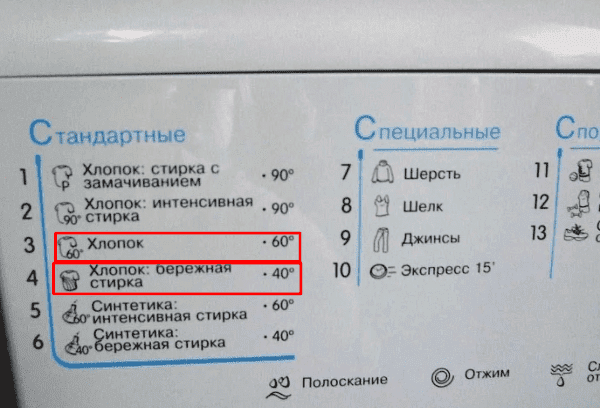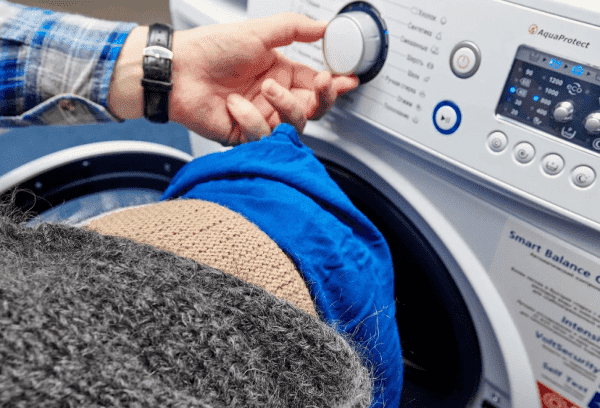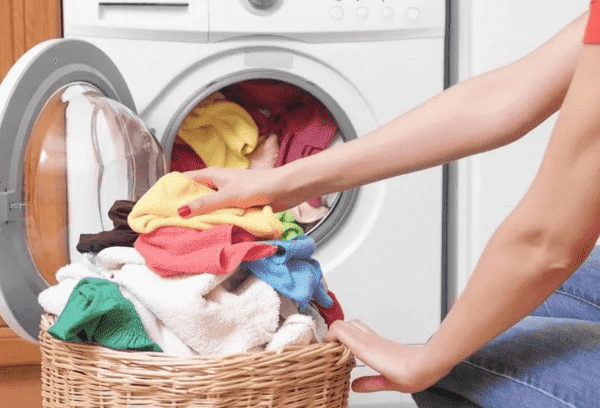Spin modes in washing machines: which speed is correct, which class is more effective, how to choose the best model
Content:
Before buying a washing machine, you must carefully study all its functionality and technical characteristics. One of the key assessment categories is the spin class of washing machines. This criterion allows you to evaluate the effectiveness of processing items after a wash cycle, and to be more precise, it shows the residual moisture of the laundry.
Principles of classification
Modern manufacturers produce hundreds of new models of washing machines every year. Each of them, based on certain calculations, is assigned one of seven spin classes.
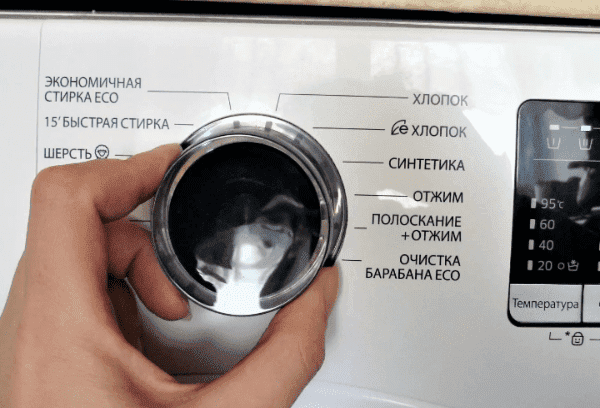
To do this, tests are carried out in a laboratory setting. The laundry is weighed before and after the washing process, after which the first is subtracted from the second indicator and the resulting value is again divided by the weight of dry laundry. The result is converted into a percentage (multiplied by 100%). Thus, an efficiency index is calculated, on the basis of which the equipment is assigned a certain class.
It is clear that the lower the coefficient, the more efficient the washing machine, and therefore the higher its class.All manufacturers use the European quality standard, which is designated in Latin letters and corresponds to the following efficiency index:
- A (<45%);
- B (45-54%);
- C (45-63%);
- D (63-72%);
- E (72-81%);
- F (81-90%);
- G (>90%).
Class “A” is considered the most effective, class “G” is the least effective.
Explanation and characteristics
Thanks to the letter designation of the efficiency class, the buyer can immediately obtain complete information about the number of revolutions, the percentage of residual moisture and the energy consumption of the machine.
Class "G"
The least efficient class of machines with the lowest speed (400 per minute). The residual moisture coefficient is more than 90%. Therefore, laundry requires long subsequent drying.
Class "F"
The efficiency ratio is 80-90%. Number of revolutions – 600 per minute. Slightly better than class “G”, but clothes dryness still does not exceed 20%.
Class "E"
The standard residual humidity indicator for this class is 72-81%. The machine operates at 800 rpm, that is, it is 2 times more powerful than the “G” class.
Class "D"
The spin speed of this class of equipment is 1000 rpm. Residual moisture content of laundry is from 63 to 71%. This indicator suits most buyers who are looking for optimal value for money.
Class "C"
At a power of 1200 rpm, the laundry comes out of the machine half dry (54-63%). Washing machines of this class are considered to be of high quality and functional.
Class "B"
Second place goes to technology with a spin speed of 1400 rpm. The residual moisture content of the laundry is 44-52%.
Class "A"
The most efficient machines spin at 1600 rpm. After such a spin, no more than 45% moisture remains in the laundry.This is the best level of efficiency to date.
Impact of class on energy consumption
Another criterion for choosing a washing machine is energy efficiency. This concept is closely related to the spin class, so the higher the number of revolutions, the more energy the equipment consumes during its operation.
Modern models of washing machines have the following classification according to energy efficiency criteria:
- A is the best option, allowing you to save up to 80% energy. There are several subclasses in this class: A+, A++, A+++ (the more “+”, the greater the savings).
- B – allows you to save up to 50% of electricity. Quite an interesting option in terms of the combination of price and quality.
- C – guarantees efficient operation with energy savings of 25%.
- E - refers to inefficient types of equipment, allowing you to save only 10% of energy.
- F – washing machines, which consume 10% more energy than any other equipment;
- G is the champion in the inefficiency category, consuming 25% more electricity than other machines.
In addition to the spin class and energy consumption, when choosing a washing machine you need to pay attention to the washing class, otherwise there is a risk of getting well-wrung but not clean enough clothes.
Drying and ironing mode
Today, models of washing machines with drying and ironing modes are more popular than ever. They are especially in demand among city residents who are faced with the problem of lack of space for natural drying of clothes.
The advantages of having these modes are undeniable:
- Save time. Linen dries several times faster, and the ironing function can significantly reduce the time spent at the ironing board.
- Space saving. The built-in drying function eliminates the need to purchase a separate drying unit. Moreover, with additional built-in functions, you will not need to occupy a loggia or part of the room to install a stationary clothes dryer.
- No humidity. When wet laundry dries, especially near heating devices, the overall humidity level in the room increases. This harms both finishing elements (wooden floors, wallpaper) and the general well-being of a person (high fatigue, lethargy).
- Saving money. The presence of a drying mode allows you to save on the purchase of a drying cabinet and clothes dryer, prices for which reach up to 7,500 rubles.
Don't forget about the aesthetic side. Wet laundry hanging around the apartment in no way decorates the interior.
How to make a choice?
Oddly enough, when choosing a washing machine it is better to pay attention not to the number of revolutions, but to the optimal balance between energy efficiency, functionality and price.
Experts recommend purchasing equipment from Japanese, German and Italian manufacturers, who have long proven themselves in this market. Those who want to save on electricity costs should take a closer look at equipment of classes A and A+.
Who will use the washing machine also matters. Young people most often purchase models with drying and ironing functions, as they want to save precious time. But older people, first of all, look at the cost and therefore rarely make a choice in favor of expensive models with advanced functionality.
Interestingly, in practice, the difference between laundry spun at 1000 and 1500 rpm is almost unnoticeable, so there is little point in overpaying for higher-class equipment.
It is also worth paying attention to the number of washing programs provided by the manufacturer. Materials with different compositions require different temperature conditions, washing times and spin speeds.
Cotton
The optimal temperature for washing cotton materials is 40-60°C. Heavy soiling, as well as white and light-colored items, can be washed at 60°C. For slightly dusty natural cotton fabrics, 40°C is sufficient. Too high a temperature will cause the fabric to shrink and will also affect the brightness of the material's shade. A spin mode of 800-1000 rpm will be more than enough.
Synthetics
Synthetic material, despite its high performance qualities, is best washed at 40°C, spin at 800, and dry at 400 rpm. Some synthetic fabrics do not require ironing after washing and drying; others are ironed at low temperatures using a steam generator. Errors in drying and spinning can lead to the fact that a thing, even from the most expensive synthetics, can shrink.
Delicate cycle/hand wash, wool
It is recommended to wash woolen items by hand. However, modern models of washing machines provide a hand wash mode. Therefore, many people use it to make wool items cleaner and tidier.
The temperature when washing wool should not exceed 40°C, and the spin mode should not exceed 600 rpm. It is generally not recommended to dry woolen items in a machine, since wool shrinks very strongly when exposed to high temperatures.
Kids' things
The choice of washing mode for children's clothes depends on the materials from which they are made and the age of the child. Cotton linen for infants and children up to one year old is washed at 90°C.First of all, this is due to the disinfection of things, since the skin of children is very sensitive, especially to various types of infections.
The optimal spin mode is 1200 rpm. Drying is best done naturally. The “easy ironing” function can make life easier for a young mother. It will save a lot of time and allow you to spend the freed couple of hours on yourself or your child.
Intensive wash, outerwear
The composition of the materials is also of great importance here. Typically, outerwear is washed at 60°C and spun at 800-1000 rpm. However, if the composition contains wool, then it is better to wash such items at 40°C. Dry outerwear naturally on a hanger with a hanger.
Quick wash
You don’t want to spend a lot of time and effort organizing a separate wash for lightly soiled items, but it’s also unpleasant to wear such items. The quick wash program will help you quickly get rid of small stains. The temperature in this case will be 40°C. The spin program will depend on the composition of the fabric.
The automatic machine is a real find and a household assistant. It allows you not only to wash, but also to dry and even iron clothes, saving precious time, nerves and health.
